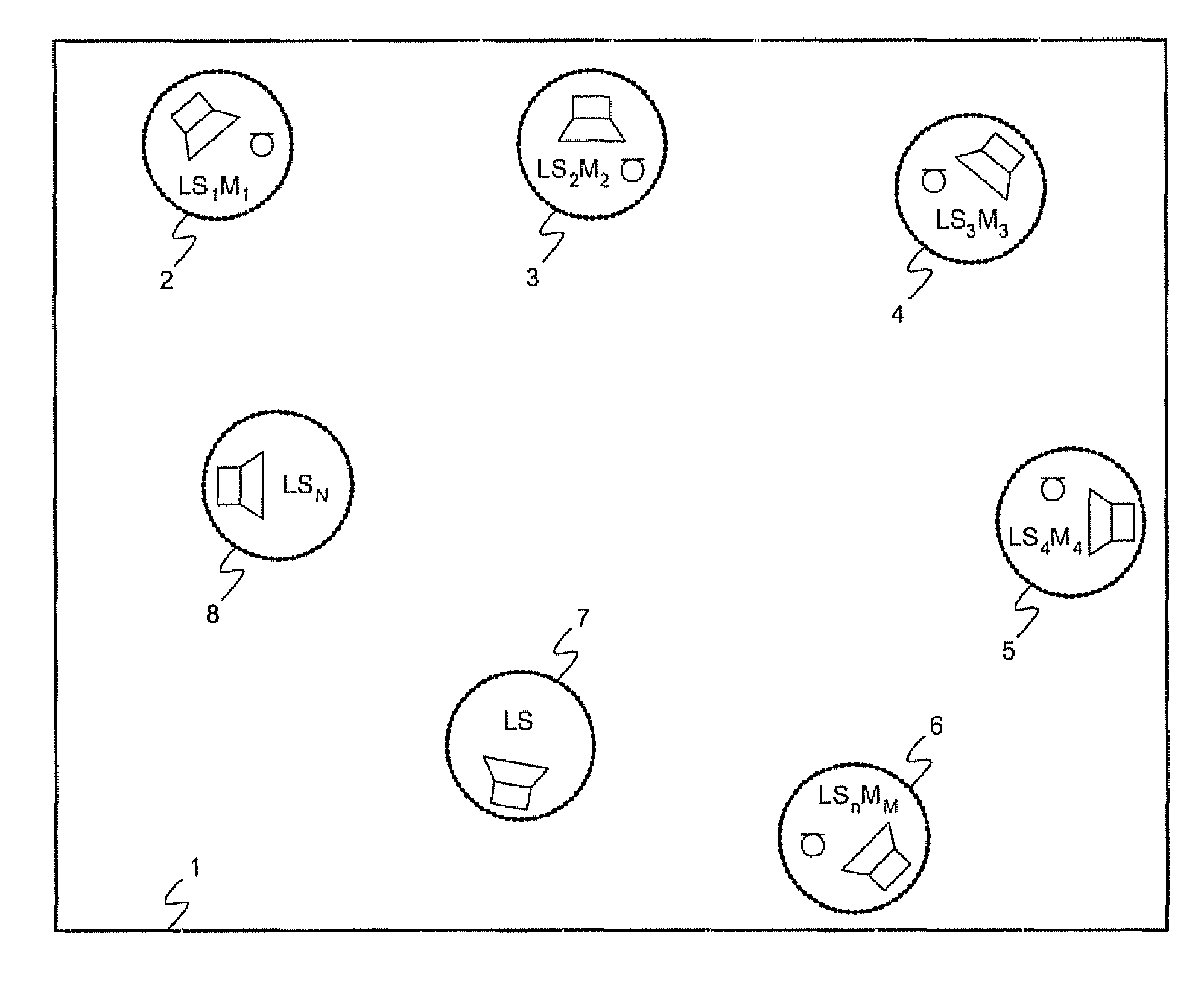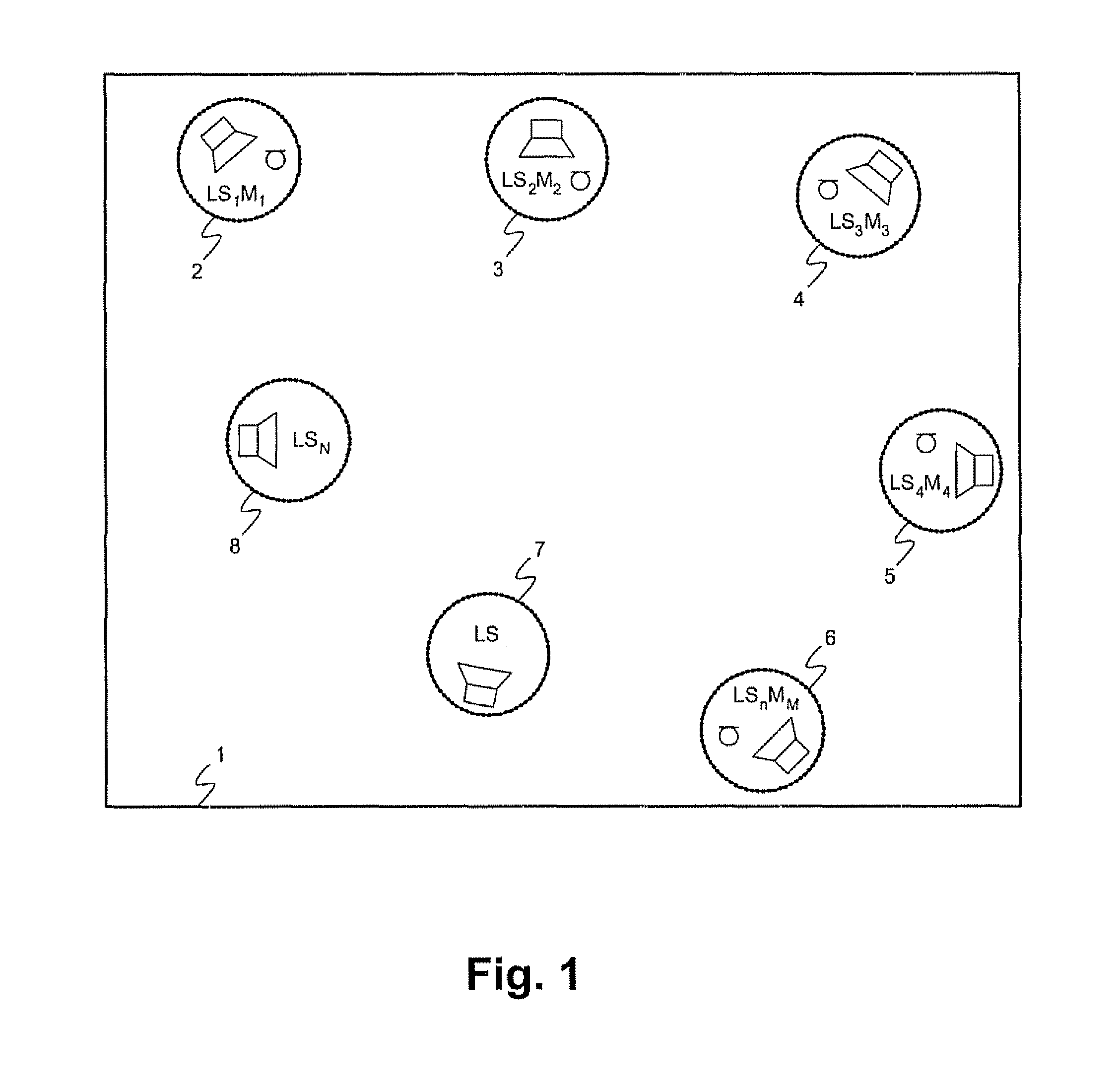Timbral correction of audio reproduction systems based on measured decay time or reverberation time
a technology of audio reproduction system and decay time, applied in the direction of tone control, electrical transducer, transducer casing/cabinet/support, etc., can solve the problem of not being able to measure sound decay over the full 60 db dynamic range, and achieve the effect of reducing the detrimental
- Summary
- Abstract
- Description
- Claims
- Application Information
AI Technical Summary
Benefits of technology
Problems solved by technology
Method used
Image
Examples
embodiment 2
DESCRIPTION OF EMBODIMENT 2 OF THE INVENTION
[0094]Reverting to FIG. 9, there is shown a simple representation of two different loudspeaker systems. 47 represents a traditional system with a loudspeaker unit or units typically mounted only on the front of an enclosure. 48 represents a traditional loudspeaker with a unit or units typically mounted only on the front of an enclosure and another electrically and acoustically separate combination of loudspeaker units mounted such that they face in another direction, a so-called gradient loudspeaker with, preferably, a bidirectional response.
[0095]According to the second embodiment of the invention, the correction filter or equalisation curve 55 is applied as shown in FIG. 11 for a traditional loudspeaker system 57 combined with a gradient loudspeaker system 56 which is shown schematically in FIG. 9. The system is designated by reference numeral 48 and represents a traditional loudspeaker with a unit or units typically mounted on the front...
embodiment 3
DESCRIPTION OF EMBODIMENT 3 OF THE INVENTION
[0101]In this embodiment of the invention, the correction filter or filters or equalisation curve or curves 62 and 63 are applied as shown in FIG. 12 for a traditional loudspeaker system 65 combined with a gradient loudspeaker system 64 which is shown schematically in FIG. 9. This loudspeaker system is designated by reference numeral 48 in FIG. 9 and represents a traditional loudspeaker with a unit or units typically mounted on the front of an enclosure and another electrically and acoustically separate combination of loudspeaker units mounted such that they face in another direction. This additional combination of drive units are designed and driven in such a way to achieve a certain directivity response 66 with a null on the axis 68 of the traditional forward-facing drive unit or units, a so-called gradient loudspeaker with, preferably, a bidirectional response. The gradient loudspeaker in itself is a known acoustical method. 67 represen...
PUM
 Login to View More
Login to View More Abstract
Description
Claims
Application Information
 Login to View More
Login to View More - R&D
- Intellectual Property
- Life Sciences
- Materials
- Tech Scout
- Unparalleled Data Quality
- Higher Quality Content
- 60% Fewer Hallucinations
Browse by: Latest US Patents, China's latest patents, Technical Efficacy Thesaurus, Application Domain, Technology Topic, Popular Technical Reports.
© 2025 PatSnap. All rights reserved.Legal|Privacy policy|Modern Slavery Act Transparency Statement|Sitemap|About US| Contact US: help@patsnap.com



